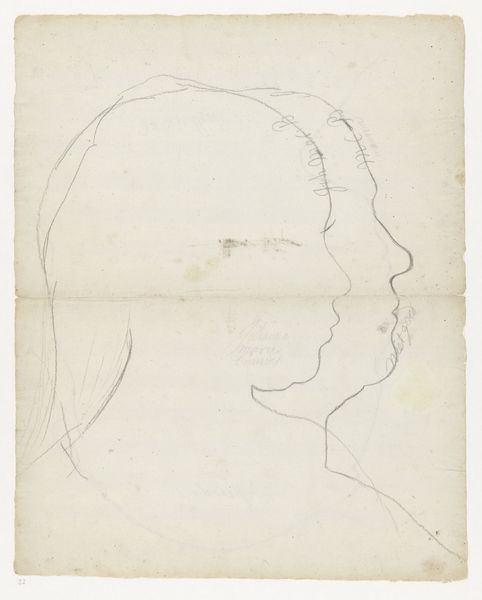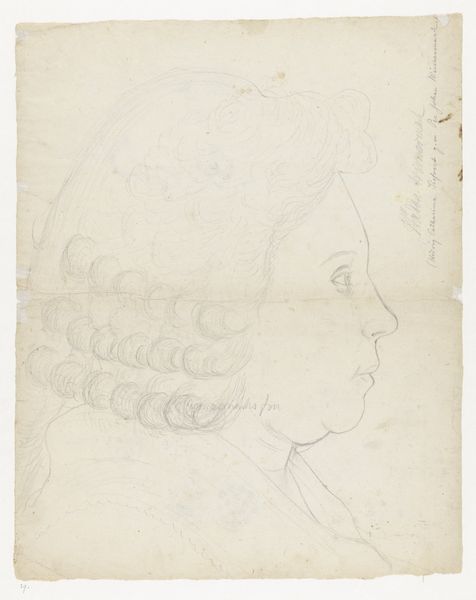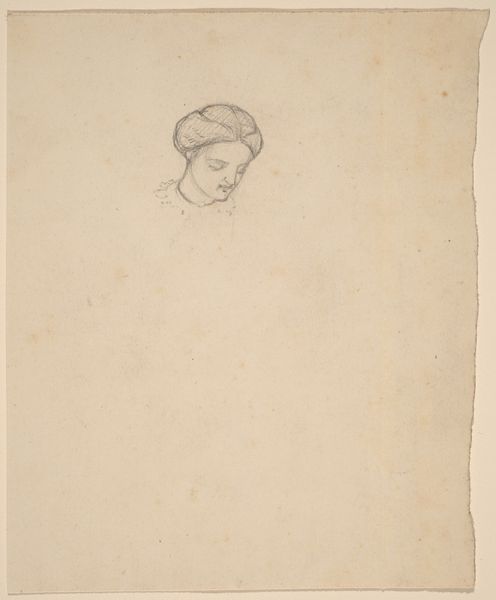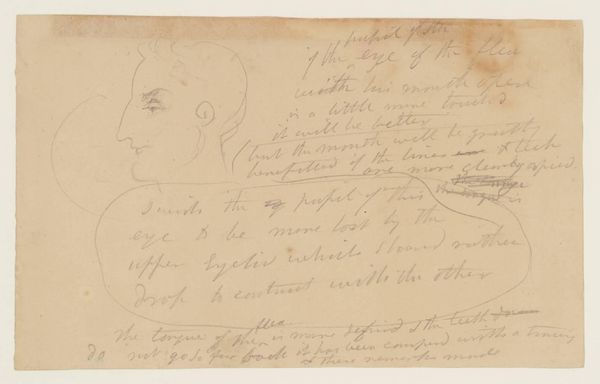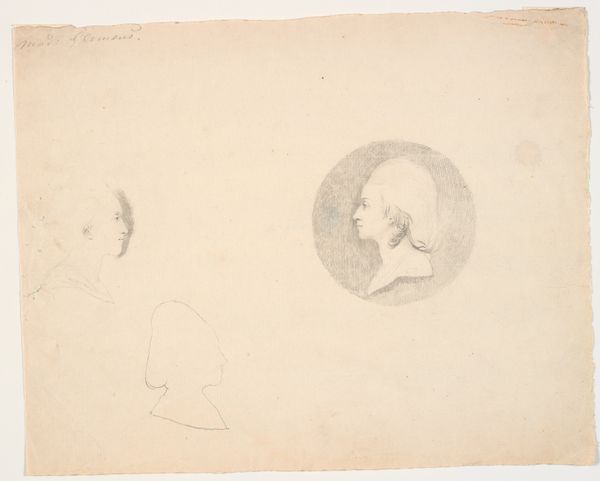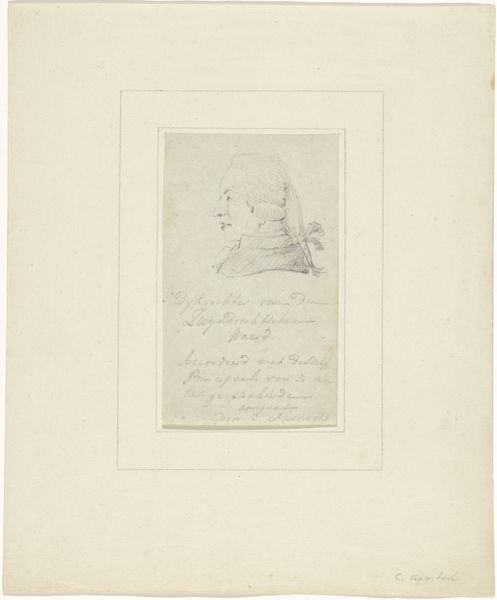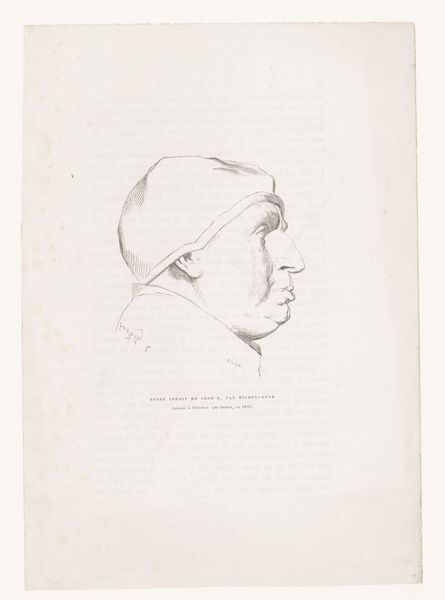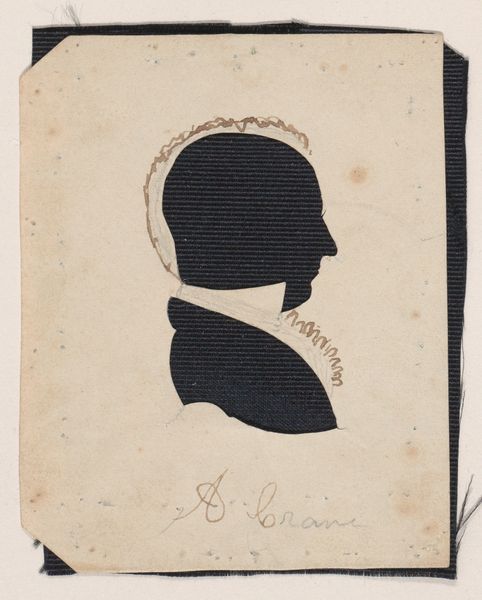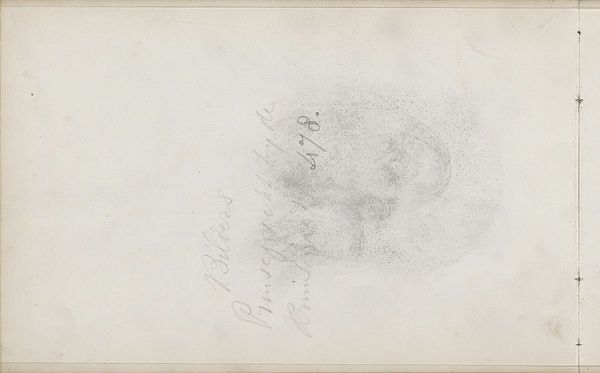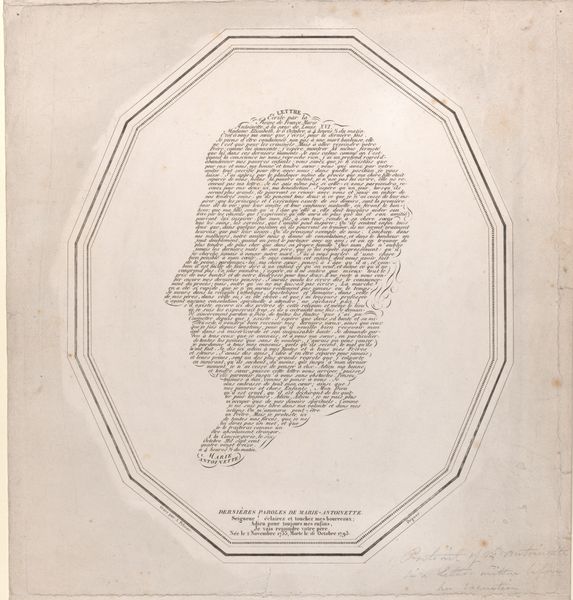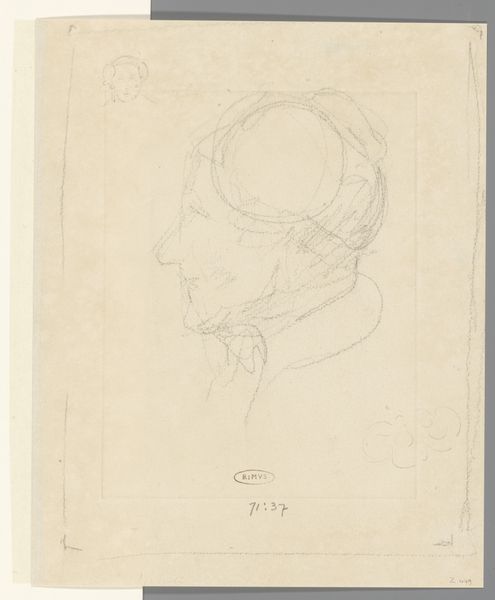
drawing, pencil
#
portrait
#
drawing
#
neoclacissism
#
pencil
Dimensions: height 414 mm, width 330 mm
Copyright: Rijks Museum: Open Domain
Jan Brandes made this silhouette portrait study with graphite on paper. The graphite lines, so light they almost seem to breathe, capture the contours of a face in profile, a study marked by its simplicity and directness. Silhouette portraits were a popular, accessible form of representation in the late 18th century. Before photography, these provided an affordable alternative to painted portraits, democratizing image-making. The process typically involved tracing a shadow cast by a sitter onto paper, then filling it in, often with black ink or paint. Brandes's study reveals the initial, crucial step of capturing the likeness with a few, precise lines. The very act of tracing, of capturing an outline, speaks to a moment of transition in image production, hinting at the mechanical reproduction that would soon transform artistic practices. By focusing on the hand-drawn line, we recognize the skill involved in this seemingly simple process, reminding us that even the most accessible forms of art carry their own histories of labor, technique, and social meaning.
Comments
No comments
Be the first to comment and join the conversation on the ultimate creative platform.
